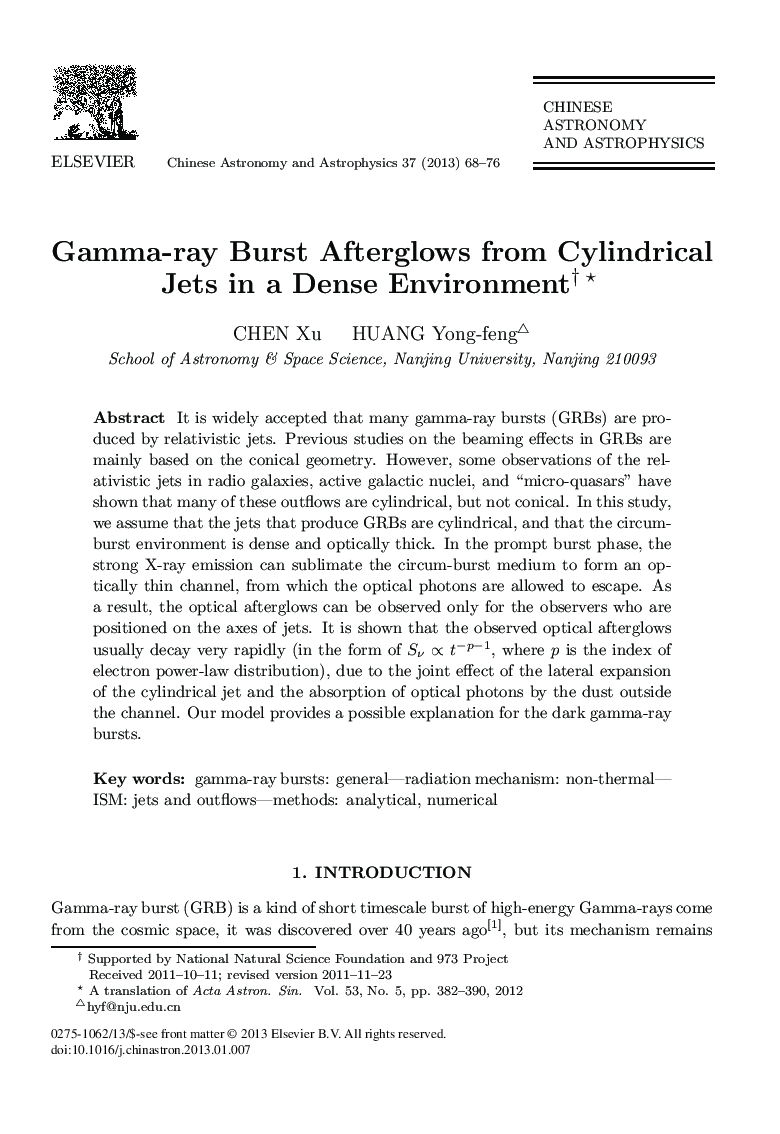| Article ID | Journal | Published Year | Pages | File Type |
|---|---|---|---|---|
| 1771751 | Chinese Astronomy and Astrophysics | 2013 | 9 Pages |
It is widely accepted that many gamma-ray bursts (GRBs) are produced by relativistic jets. Previous studies on the beaming effects in GRBs are mainly based on the conical geometry. However, some observations of the relativistic jets in radio galaxies, active galactic nuclei, and “micro-quasars” have shown that many of these outflows are cylindrical, but not conical. In this study, we assume that the jets that produce GRBs are cylindrical, and that the circum-burst environment is dense and optically thick. In the prompt burst phase, the strong X-ray emission can sublimate the circum-burst medium to form an optically thin channel, from which the optical photons are allowed to escape. As a result, the optical afterglows can be observed only for the observers who are positioned on the axes of jets. It is shown that the observed optical afterglows usually decay very rapidly (in the form of Sv oc t^v^l1 where p is the index of electron power-law distribution), due to the joint effect of the lateral expansion of the cylindrical jet and the absorption of optical photons by the dust outside the channel. Our model provides a possible explanation for the dark gamma-ray bursts.
